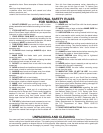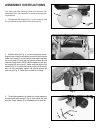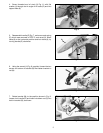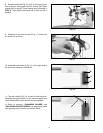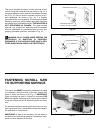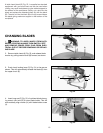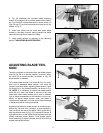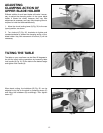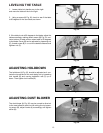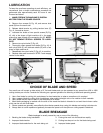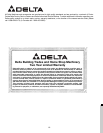
11
Fig. 26
Fig. 27
5. Fig. 26 illustrates the quickset blade changing
wrench (K) engaged with the lower blade holder assem-
bly. Turn wrench counterclockwise to loosen screw (J)
Figs. 26 and 27, and remove blade from lower chuck, as
shown in Fig. 27.
6. Insert new blade into the lower and upper blade
holders in the same manner, making certain the blade
teeth are pointing down toward the table.
7. Apply blade tension by referring to the following
section "ADJUSTING BLADE TENSION."
Fig. 28
Fig. 29
ADJUSTING BLADE TEN-
SION
Tension is applied to the blade when the blade tension
lever (A) Fig. 28, is in the rear position, as shown. When
the lever (A) is moved forward, as shown in Fig. 29,
blade tension is released.
To increase blade tension, turn knob (B) Fig. 29, clock-
wise and to decrease blade tension, turn knob (B)
counter-clockwise. When adjusting blade tension, lever
(A) should be in the forward position, as shown in Fig.
29. NOTE: It is necessary to adjust the blade tension
knob (B) only when the blade is removed from both
upper and lower blade holders and a new or different
type of blade is assembled to the holders. It is not nec-
essary to adjust blade tension when the blade is
removed and replaced in only the upper blade holder as
in performing inside cutting operations.
Adjusting the blade for proper tension is usually accom-
plished by trial and error; however, a good method to
use is to pluck the rear of the blade, like a guitar string,
after the tension lever (A) Fig. 29, is moved to the rear. A
high-pitched tone of the blade should be heard and this
usually indicates proper tension. Finer blades require
more tensioning (a higher pitched sound) while thicker
blades require less tension.
K
J
J
A
A
B





